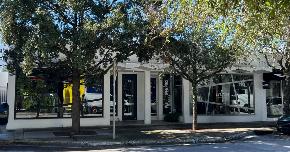Thirty years ago, Billy Joel wrote a song in which the narrator proclaimed his own recklessness by pointing out that he “walked through Bedford-Stuy alone.” A poster child for dangerous urban blight in those years, the Bedford-Stuyvesant section of Brooklyn is today “one of the most exciting examples” of the borough’s redevelopment, in the words of Michael Amirkhanian, territory manager for Massey Knakal.
Generally speaking, the improvements coming to Bed-Stuy are a result of the proverbial rising tide that lifts all boats. More specifically, there have been a couple of concrete steps taken to steer the Bed-Stuy boat: an upzoning of the neighborhood’s southern portion, south of Quincy and Gate streets; and the February 2007 establishment of the Bed-Stuy Gateway Business Improvement District, which expects to be fully funded by the beginning of 2009. The BID encompasses Fulton from Bedford Avenue to Marcus Garvey Boulevard and Nostrand Avenue from Halsey Street to Atlantic Avenue.
In recent years, Bed-Stuy’s population has begun rebounding and the demographic mix of that population has been diversifying. Those with a historical bent might point out that the demographics are returning to the kind of diversity seen here in former years. Bed-Stuy was the childhood home, after all, of both Norman Mailer and Lena Horne, and it remains home to a sizeable cluster of brownstones.
Still, as Amirkhanian tells Real Estate New York, a lot of work remains to be done, not least of which is to get past the current market. “There’s no question that things have softened,” he says. “Especially on vacant land, developers are going to want to come in and take property at a steal. One important change I’ve seen, and one which is happening across most parts of Brooklyn, is that developers are demanding that these development sites make sense from a rental perspective. That puts a whole different number on the value of a development lot.”
One potential opportunity available to both buyers and sellers of development lots stems from changes to the city’s 421a tax abatement program. The revised 421a program, which took effect July 1, excludes all of Manhattan and larger swaths of Brooklyn and Queens—but not Bed-Stuy. “A good portion of Bed-Stuy, including some of the primary portions of the retail corridor, is outside what would now be considered the geographic exclusion area and will retain the 421a benefits,” Amirkhanian says. “That makes things pretty interesting.” He notes that the boundaries of the GEA are “not necessarily intuitive,” and that it affects some areas “that could use the help” as well as neighborhoods that are already substantially developed. In the portions of Bed-Stuy that are inside the GEA, the impact on pricing has already been seen.
“There was a lot that traded in June which would not have retained the 421a benefits,” says Amirkhanian. “It was a lot that I would have imagined would get offers of $70 to $80 per buildable sf, and it traded for $55 per sf. That’s the first example I’ve seen in our neighborhood of the impact of the GEA.”
Regardless of a neighborhood’s demographics, retail can be a catalyst for residential growth, and Bed-Stuy stands poised to build on the momentum already established with the arrival of Home Depot, Applebee’s and a consumer banking center. “People in the retail community are very excited about this neighborhood,” Amirkhanian says. “They know there’s potential and they’re looking at making a real change here.”
The neighborhood benefits from one of the busiest subway stops in Brooklyn—the Fulton Street/Nostrand Avenue station served by the A and C trains—and “plenty of foot traffic,” says Amirkhanian. “You just have to warm up the retail environment. You’ve got to make it so people will want to shop there. The Bedford-Stuyvesant Business Alliance has a website, ShopBedStuy.com, to encourage people to shop in this community and not lose their consumer dollars to downtown Brooklyn or Manhattan. The hope is that we’ll attract even more retail because there’s a whole market there that isn’t being served.”
With all of the forward motion on revitalizing Bed-Stuy, Amirkhanian believes the area retains its unqiue character. “What makes the neighborhood special is that with these brownstone blocks and some of the lesser density, you have this community feel that you don’t really get in other parts of the city,” he says. “There are some fringe neighborhoods where people look in the rear-view mirror and ask, ‘Why didn’t I get involved with that market when it was just getting started?’ I really believe this is one of them.”





 Copyright © 2024 ALM Global, LLC. All Rights Reserved.
Copyright © 2024 ALM Global, LLC. All Rights Reserved.











